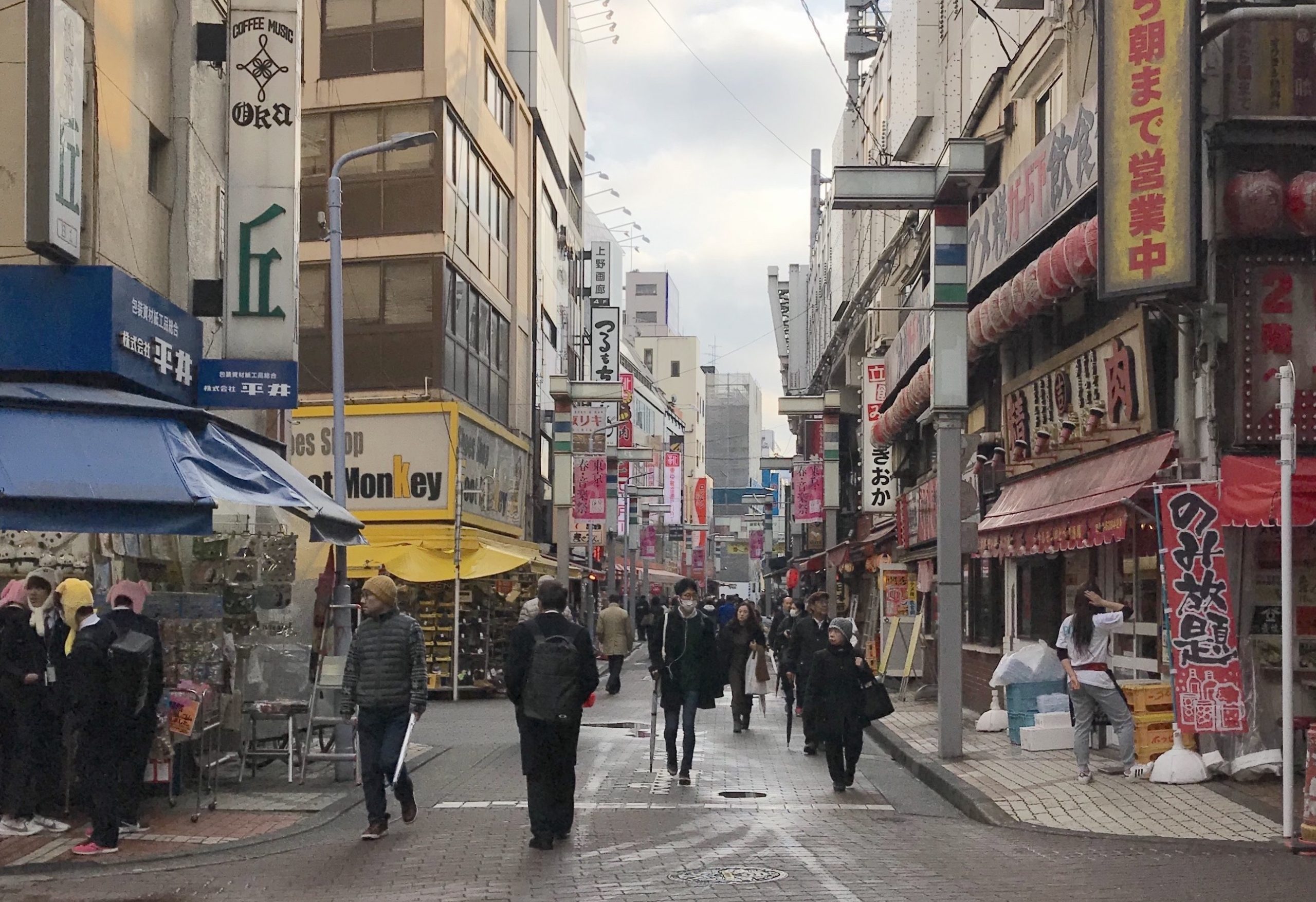Contents
- In short: The particle “ni” (に) has four main functions among many more
- A bit more on the four functions of the particle “ni” (に)
- Bonus: A general character of “ni” (に)
************************
1. In short: The particle “ni” (に) has four main functions among many more
(1) It can be the time expression marker (with many different kinds of verbs)

Example 1: 1月に日本へ行きます。Ichi-gatsu ni Nihon e ikimasu. (I am going to Japan in January.)
(2) It can mean “to” or “from” a person with =>a Verb of Giving or a =>Verb of Receiving
Ex. 2: 友だちに電話をかけました。Tomodachi ni denwa o kakemashita. (I called a friend.)
Ex. 3: 友だちに新しい電話番号をもらいました。Tomodachi ni atarashii denwa-bangoo o moraimashita. (I got a new phone number from a friend.)
(3) It can be a destination marker with a =>Verb of Going in One Direction
Ex. 4: 新しい映画館に行きました。Atarashii eiga-kan e ikimashita. (I went to the new movie theater.)
(4) It can be a location marker with a =>Verb of Existing
Ex. 4: コンビニにトイレがあります。Konbini ni toire ga arimasu. (There is a bathroom at the convenience store.)
2. A bit more on the four functions of the particle “ni” (に)
On Function (1): Note we say “ni” only after a specific, historical time expression. For example, “8:30A.M.”, “October 20th (of a specific year)”, “the month of May (of a specific year)”, “the 19th century”, will take “ni” after them.
On the other hand, we don’t say “ni” after a time expression which shows unspecific time. Examples are: Today, a while ago, next week, last month, this year, etc.
To help you remember, there is an interesting analogy with English. You don’t say a preposition such as “at”, “on” or “in” with unspecific time expressions, right? It is just like we don’t say the particle “ni” with those expressions.
On Function (2), the [Person + “ni”] block means “to [the recipient]” or “from [the giver]” depending on the verb following it. It means “to (someone)” if the verb is one of the =>Verbs of Giving, and “from (someone)” if the verb is one of the =>Verbs of Receiving. Therefore if you hear the [Person + “ni”], carefully listen for the verb.
On Function (3), “ni” means the same as “e”. However, “ni” has a wider usage. You can also use “ni” after an ACTIVITY, the purpose of your going somewhere.
Ex. 5: 散歩に行きました。Sampo ni ikimashita. (I went to have a walk.)
Ex. 6: 出張に行きました。Shucchoo ni ikimashtia. (I went on a business trip.)
On Function (4), “ni” shows a location of something or someone with a Verb of Existing.
3. Bonus: A general character of the particle “ni”
The particle “ni” has several meanings and is used in a lot of idiomatic expressions. In remembering them, it helps to know that many of them are related to one of its big characters. Very often “ni” shows a movement toward something (and as a result often actually having reached it). Observe Ex. 7-10.
Ex. 7: 机に本を置きました。Tsukue ni hon o okimashita. (I put a book on the desk.)
Ex. 8: 駅に着きました。Eki ni tsukimashita. (I arrived at the station.)
Ex. 9: ここにすわりましょう。 Koko ni suwarimashoo. (Let’s sit down here.)
Ex. 10: 胸にポケットがついています。Mune ni poketto gat suite imasu. (There is a pocket attached to the chest.)
It also shows a position facing a particular direction as follows:
Ex. 11: 駅に向かってまっすぐ歩きました。Eki ni mukatte massugu arukimashita. (I walked straight toward the station.)
Related Posts
- [Next Post] The Particle “to” (と)
- Particles and Their Related Verbs
- [Previous Post] The Particle “e” (へ)
External Link
- Particles (Japanese only)




